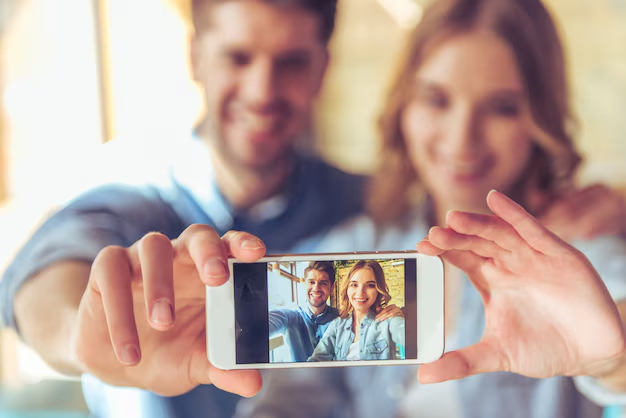Effortless Photo Transfer: Bringing Your Memories to Your Computer
In today's digital age, our smartphones and cameras are bursting at the seams with photos. Whether it’s snapshots of unforgettable vacations, candid family gatherings, or just the everyday beauty around us, these photos hold precious slices of our lives. But how do you safely transfer these memories to your computer for better organization, editing, and safekeeping? It’s simpler than you think! This guide will walk you through every option for transferring photos to your computer with ease and confidence.
Understanding Your Devices
Identifying Your Device Types
Before diving into the methods of photo transfer, it’s crucial to identify the type of device you’re using. This can affect the methods available to you:
- Smartphones: Popular brands include iPhones and Android devices. Each has unique transfer methods.
- Digital Cameras: These include DSLRs, mirrorless, and point-and-shoot cameras.
Compatible Operating Systems
Your computer's operating system will also dictate which methods are most seamless. Whether you’re using Windows, macOS, or Linux, there are pathways that cater specifically to each.
Methods for Transferring Photos from Smartphones
Basic USB Cable Connection
Pros: Fast, Secure
Cons: Requires a cable, no wireless option
Connecting your phone to your computer using a USB cable remains one of the easiest methods. Here's how:
- Connect Using USB Cable: Plug your phone into your computer with its USB cable.
- Select Transfer Mode:
- For Android: You may need to select "File Transfer" or "MTP" on your device.
- For iPhone: Trust the computer if prompted.
- Browse and Copy: Your phone will appear as an external device. Navigate to the pictures folder, usually named “DCIM,” and drag the desired photos to your computer's folder.
Wireless Transfer Methods
For those who prefer to cut the cords, wireless methods allow for more flexibility.
Using Cloud Services
Pros: Accessible anywhere, backups
Cons: Requires internet, privacy concerns
- Google Photos (for Android and iOS): Automatically backs up photos. Access via the Google Photos website.
- iCloud (for iOS): Photos can be accessed via iCloud on your Mac or PC.
Apps for Direct Transfers
Pros: Efficient, no internet required
Cons: Requires app installation
Apps like Photos Companion or SHAREit facilitate direct wireless transfers between your phone and computer.
Bluetooth Transfer
Pros: No cables, easy setup
Cons: Slower, range limited
- Pair Your Devices: Ensure Bluetooth is on both devices and pair them.
- Send Photos: Select photos on your phone and choose to send via Bluetooth. Accept the transfer on your computer.
Methods for Transferring Photos from Digital Cameras
Memory Card Readers
Pros: Fast, doesn’t drain camera battery
Cons: Requires card reader
- Remove Memory Card: Take the SD card from your camera.
- Insert into Reader: Use a card reader to connect to the computer.
- Copy Photos: Access the card through the file explorer and copy your photos.
Direct USB Connection
If your camera supports USB transfer, plug it directly into your computer. Most systems will recognize it as a media device, enabling you to drag and drop photos.
Wireless Transfer with Wi-Fi Enabled Cameras
Some modern cameras come with built-in Wi-Fi. This allows you to transfer photos wirelessly to your computer or smartphone using the camera’s app.
Advanced Tips and Tricks
Organizing Your Photos
After transferring, it’s smart to organize your photos for easy access.
- Create Folders: Use dates or events as folder names.
- Rename Files: Give each photo descriptive names to locate them quickly.
- Tagging and Metadata: Use software like Adobe Lightroom to add tags and metadata.
Regular Backups
Stay Safe: Regularly back up your pictures to avoid loss due to hardware failure. Use external drives or services like Dropbox as safety nets.
Quick Reference Summary
Here’s a handy table to summarize methods and preferences:
| Method | Best For | Pros | Cons |
|---|---|---|---|
| USB Cable | Fast and secure transfers | Fast, Secure | Requires cable |
| Wireless Apps | Cord-free convenience | Flexible, no cords needed | Requires app installation |
| Cloud Services | Automatic backups | Accessible anywhere | Needs internet, privacy concerns |
| Memory Card Readers | Fast, especially with larger files | Fast, doesn’t drain camera battery | Needs card reader |
| Bluetooth | Small transfers, Bluetooth enabled PCs | Easy setup, no wires | Slow, limited range |
| Wi-Fi Cameras | Latest camera models | No wires, easy transfers | Requires Wi-Fi enabled camera |
Key Takeaways
- Identify your device and operating system to choose the best transfer method.
- Use USB or memory card readers for reliability and speed.
- Explore wireless options like Bluetooth and Wi-Fi for convenience.
- Organize and back up your photos regularly to keep your memories safe.
By choosing the right method that suits your needs, you can ensure that transferring photos is not only a simple task but a routine that keeps your digital memories secure and at your fingertips. Next time you capture those timeless moments, rest assured knowing a smooth transfer process awaits. Enjoy reliving and sharing your photographic adventures — happy snapping! 📸

Related Topics
- How Can I Transfer Contacts To My New Phone
- How Can I Transfer Music From My Ipod To Computer
- How Can I Transfer My Contacts To Another Phone
- How Can I Transfer Photos From Camera To Computer
- How Can You Transfer Text Messages To a New Phone
- How Do I Transfer Apps To My New Phone
- How Do I Transfer Contacts From One Phone To Another
- How Do I Transfer My Contacts To Another Phone
- How Do I Transfer My Contacts To My New Phone
- How Do I Transfer Phone Contacts To New Phone